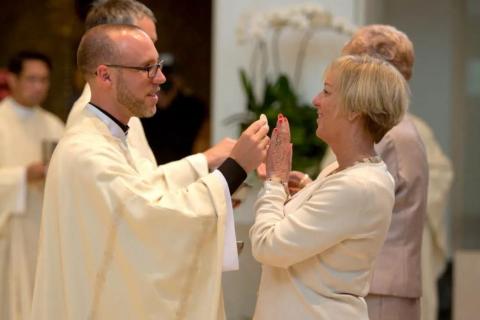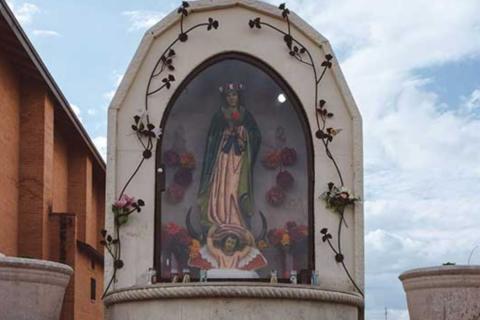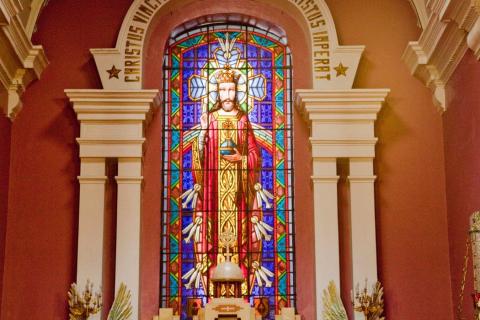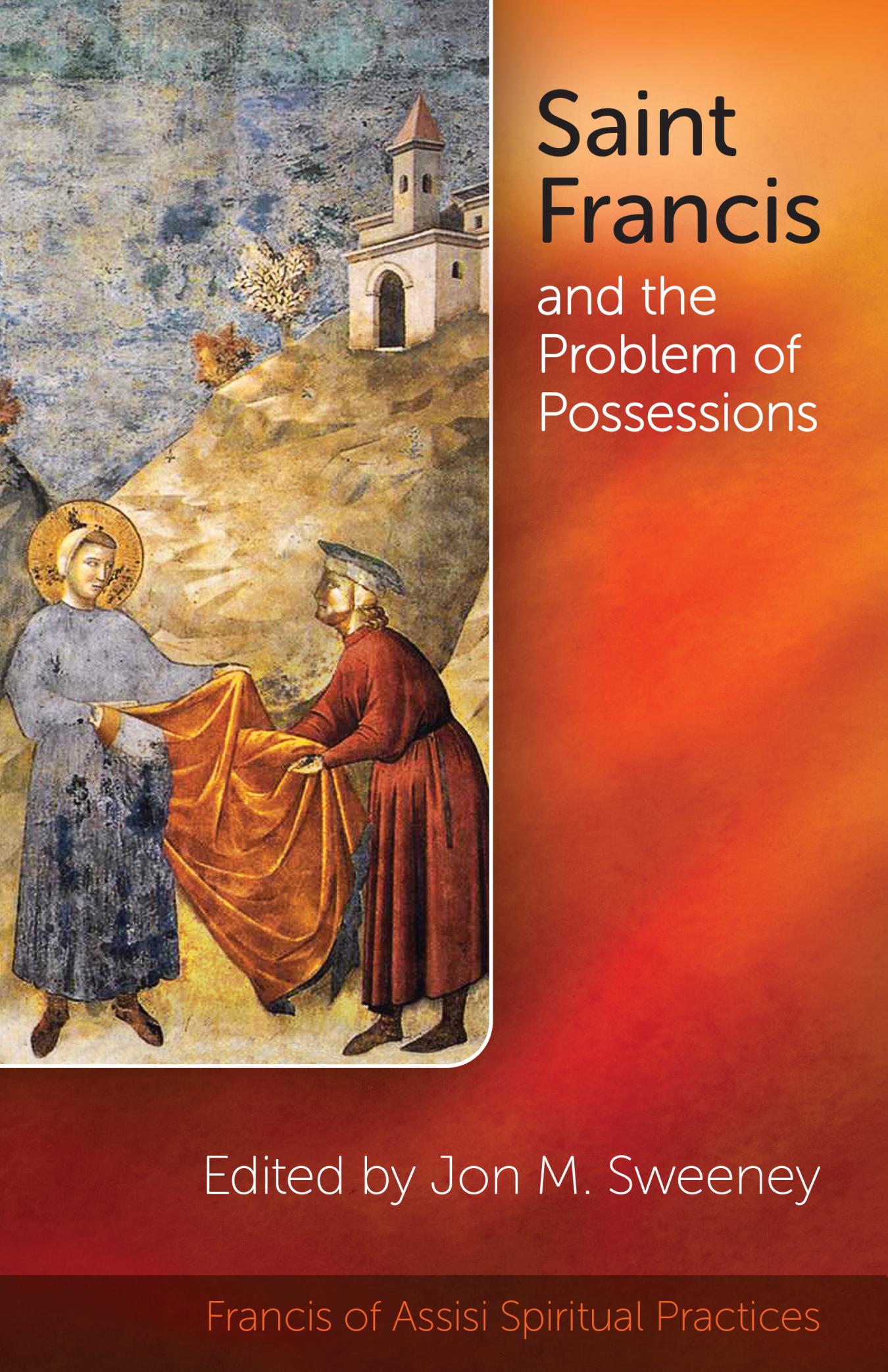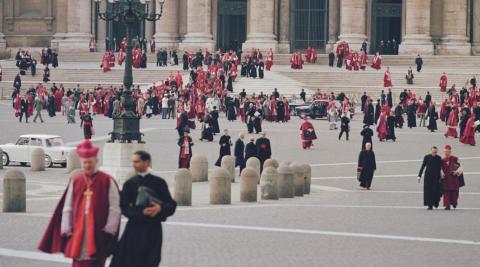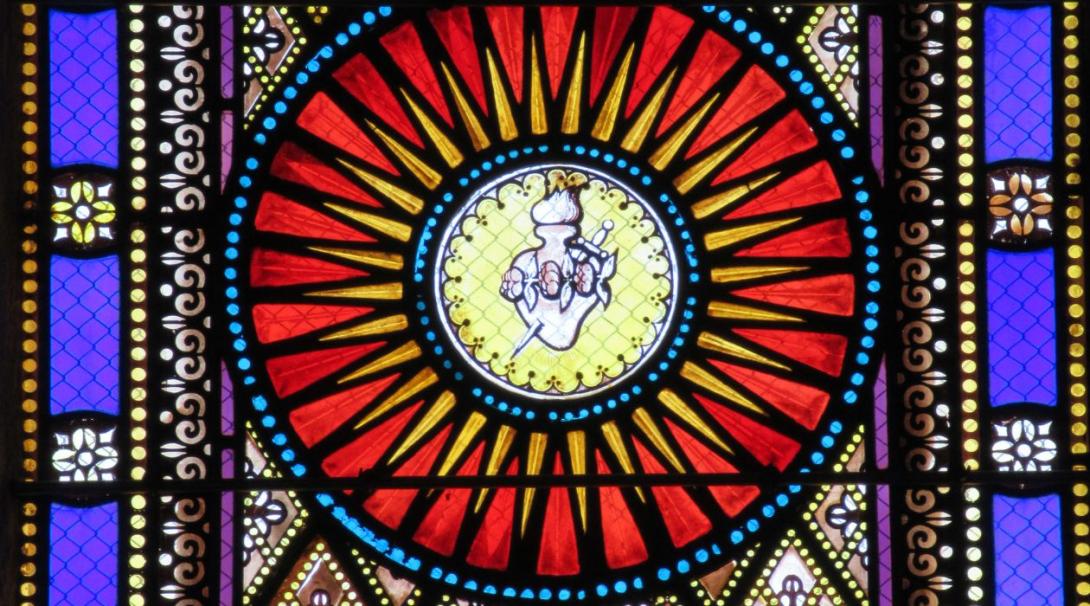
Photo by Augustine Chang
Devotion to the Sacred Heart of Jesus has centered for centuries, mostly in Roman Catholicism, on both a traditional image of Jesus placed in a prominent place in the home or church as well as prescribed prayer activity at worship. Originally, this was meant to draw believers into a deeper relationship to the reality of God’s unconditional love and mercy.
That image often includes a heart pierced with a sword, dripping blood, surrounded by a crown of thorns. Popularity of this devotion has waxed and waned over time, most recently in a growing secularized society, although the Sacred Heart remains a countercultural symbol of deeper meaning within the human heart as found in the true, good, and beautiful.
But, for many, devotion to the Sacred Heart has not resonated with the practice of contemporary spirituality. It can be seen as a sentimental, unrealistic portrayal of the experience of human and divine love as revealed in Jesus, the true embodiment of that love. It also might seem that the worship was of the image for its own sake.
Development of the devotion arose as a Gospel-shaped response to the distancing of Christians from the very heart and soul of their identity in faith. This distancing and disconnection often results from an idealized, distorted relationship with a very distant God of perfection who feels separated from all human experience. The devotion arose to say, in contrast, that within the heart of every baptized believer—members of the Body of Christ through the Paschal Mystery of Christ’s Crucifixion and Resurrection—is an encounter with the personal, affective, unconditional love and mercy prayed by Jesus on the cross, “Father, forgive them for they know not what they do.”
Perhaps the Sacred Heart of Jesus can help bring us back to our senses.
The recent recovery and resurgence of a spirituality of the Sacred Heart of Jesus is right there in Pope Francis’ 2024 encyclical, Dilexit nos, or He Loved Us, subtitled, On the human and divine love of the heart of Jesus Christ. The Pope’s prologue says it beautifully:
“He Loved Us,” Saint Paul says of Christ (cf. Ro. 8:37), in order to make us realize that nothing can ever “separate us” from that love (Ro. 8:39). Paul could say this with certainty because Jesus himself had told his disciples, “I have loved you” (Jn. 15:9,12). Even now, the Lord says to us, “I have called you friends” (Jn. 15:15). His open heart has gone before us and waits for us, unconditionally, asking only to offer us his love and friendship. For “he loved us first” (cf. 1 Jn. 4:10). Because of Jesus, “we have come to know and believe in the love that God has for us” (1 Jn. 4:16).
Perhaps the Sacred Heart of Jesus can help bring us back to our senses. Then and there, our attention is recaptured, calling us to turn away from cold heartedness in repentance and returning us to the attractive warmth of a love outpoured for us from the wounded side of the Crucified Jesus. That lavish and generous gift serves as a healing salve for our broken heartedness. The wounded human heart of Christ on the cross serves as the intersection of human and divine love as Jesus, fully God and fully human as experienced within the affective of the human heart.
So, you see, the Sacred Heart of Jesus serves best when seen not as a pretty place of perfection, and not as something odd that hangs on the wall, but an encounter with the beauty of holy love outpoured and received in the story of salvation written large in our personal story of creation, sin, and redemption. The pierced heart of the Sacred Heart of Jesus is broken open to break open our hearts in return to fully love God and neighbor with our whole heart, soul, mind, and strength.




